A variety for lovers of rare exotic tomatoes - the “Firewood” tomato
To grow vegetables it is not at all necessary to have a summer house or a garden. To provide your family with fresh tomatoes, all you need is a windowsill and a couple of pots. Breeders are developing new varieties that grow well at home and give a decent harvest to their owners.
Exotic lovers can finally breathe a sigh of relief - just recently, breeders of the Aelita agricultural company developed a new variety of tomatoes called Drova. The seeds will not surprise you with a high price and can be purchased both in the nearest supermarket and in specialized stores such as “Tormashki”, “Green World”, “Samosadnik”, etc.
Description of the variety
The very unusual shape, which actually somewhat resembles an armful of firewood with a forked end, immediately appealed to lovers of low-growing varieties. Due to their miniature size (height 30-40 cm), they are even grown on the balcony. In addition, the variety is also famous for its versatility: you no longer need to choose some tomatoes for pickling and others for fresh consumption. Tomato is used both here and there.
Ripening occurs early and requires little water. This is due to the fact that tomatoes have a poorly developed bark system (another advantage), so pots with a maximum capacity of 5 liters are suitable for growing. There are no difficulties in the breeding process (due to the high quality of the seeds), the variety is unpretentious in care and produces high yields.
Early ripening variety – already three months after planting they begin harvesting. This means that if you planted varietal tomatoes at the end of April, then at the beginning of July they can be eaten. The length of a ripe fruit can reach 13-16 cm, and its weight is 80 g. The taste of the fruit is sweet and rich. The dense pulp melts in the mouth, and the aroma hints at a feast. Salad lovers praise the tomato variety for its small number of seeds.
Briefly about the characteristics:
- Tomato weight: 75-85 g.
- The length is from 10 to 15 cm.
- Ripening time: 90-100 days.
- Bush height 35-40 cm (in greenhouses up to 50 cm)
Below you can see what tomatoes look like in the photo.
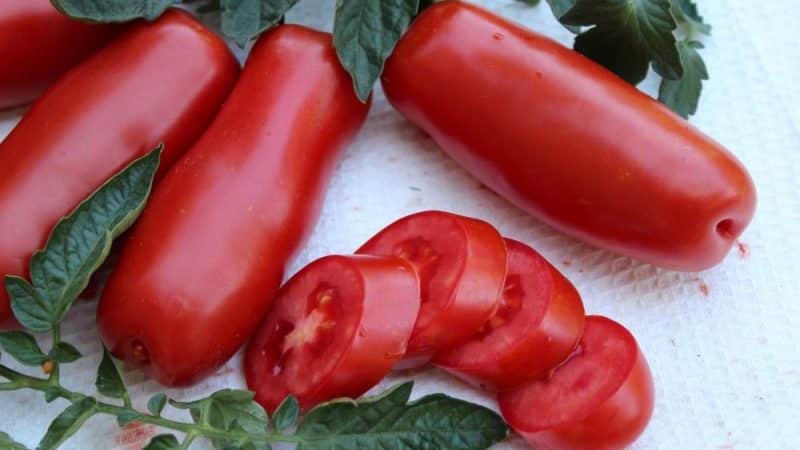
How to grow seedlings
Before you start sowing, you need to check the seeds. To do this, just pour salted water into a small container and pour the seed into it. We discard the floating seeds.
To disinfect, seeds are placed in a solution of potassium permanganate for 30-60 minutes.
Then you need to work on the soil and calcine it in a water bath. This procedure destroys pathogens and pests. Since Drova tomatoes do not have a very developed root system, we recommend buying a small pot.
Attention. It is best to use soil prepared in the fall for tomato seedlings. Vermicompost, sand and a little sawdust are mixed into the soil, which includes peat, turf soil and humus. The proportions of the components are selected depending on the incoming ingredients. Tomatoes love soil that absorbs moisture well, allows air to pass through, is not acidic and is quite nutritious.
After this, sow the seeds in the grooves, the distance between which is about 5 cm. Pre-moisten the soil with a slightly warm solution in which the seeds were kept.The sowing depth should be 1 cm, and the distance between seeds should be no more than 2 cm.
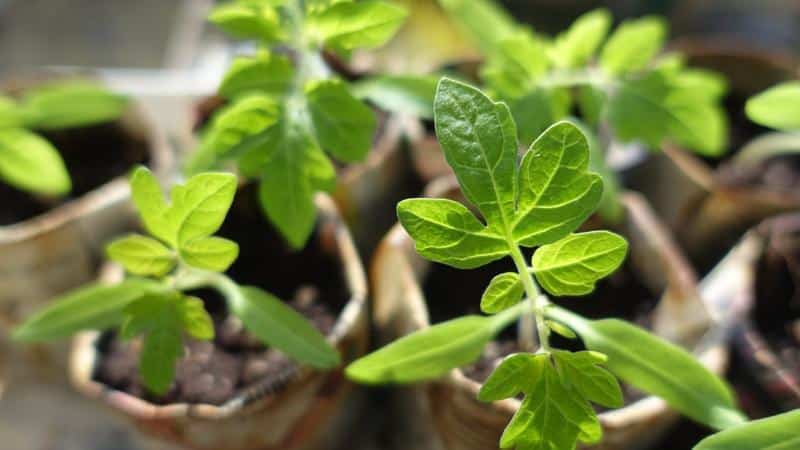
It is better to start sowing in mid-February, so that by the beginning of May the plant is ready for planting. After moving it into the ground, it is sprinkled with a little earth and covered with film. This creates a greenhouse effect, causing the plant to grow faster. When the sprouts appear, the film must be removed and the boxes with seedlings placed in the brightest place in the house.
Important. Until the first sprouts appear, there is no need to water the seeds - the moisture that accumulates in the form of condensation is enough.
The next step is picking. We transfer the sprouts to separate pots when their third true leaf appears. The plant is damaged during the replanting process and needs at least a week to recover.
10 days after the dive, we feed. For fertilizer, take a solution of 5 g of ammonium nitrate, 10 g of potassium sulfate, mixed with 15 g of superphosphate and diluted in 5 liters of water. Water with a slightly warm solution.
How to grow tomatoes
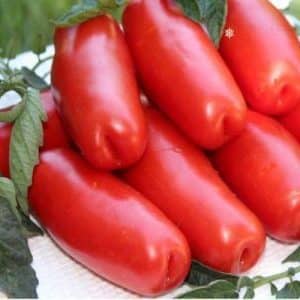
If you are planting in open ground, it is recommended to transfer the seedlings when a constant temperature of at least +15 °C is established. But before this, it is advisable to harden the plant and prepare it for “harsh” conditions. To do this, take containers with plants outside first for 30 minutes, then for an hour or longer.
If the soil is not fertile, place humus or peat chips in all holes.
Feeding tomatoes
If autumn activities to fertilize the garden plot were not carried out, then 2 weeks before the expected relocation of the seedlings, it is necessary to dig up the soil with compost or add some mineral fertilizers so that they have time to dissolve. These are phosphorus and nitrogen.
About a week after planting, we apply potash fertilizers - this element affects the number of fruits and their ripening. The best feeding – this is potassium magnesium or ash. In the first case, tomatoes are fertilized with potassium sulfate. In the second - a natural supplement, which, in addition to potassium, contains trace elements - sulfur and magnesium.
Tomatoes don't like chlorine, therefore potassium chloride cannot be used as a mineral fertilizer.
It is best to apply phosphorus fertilizers in the fall so that they have time to dissolve and transform into a form accessible to plants. In spring, the soil is fertilized with phosphorus 2-3 weeks before planting seedlings in the ground. The dry mixture is scattered and dug into the ground.
Requirements for plants
To prevent the plant from dying, follow basic care rules
- After planting in the ground, water with warm water, then do not water the plants for 7-10 days.
- Frequency glaze completely depends on the condition of the soil. We recommend adding after planting mulch, which will retain moisture in the soil for a long time.
- After the tomato begins to bloom, increase the amount of water. It is important not to overwater the vegetable, but to ensure that the soil is always moist.
- Apply fertilizer at the time of flowering and fruit ripening.
- Tomatoes do not tolerate excess fertilizer. Follow the directions on the package.
When the seedlings are planted in beds or in a greenhouse, it is necessary to provide them with support. More on tying below.
Pinching and tying
Stepsoning crops are carried out to distribute the load on the plant and increase the amount of harvest. Since our tomatoes are small in size, we leave two or three sprouts that will bear fruit.
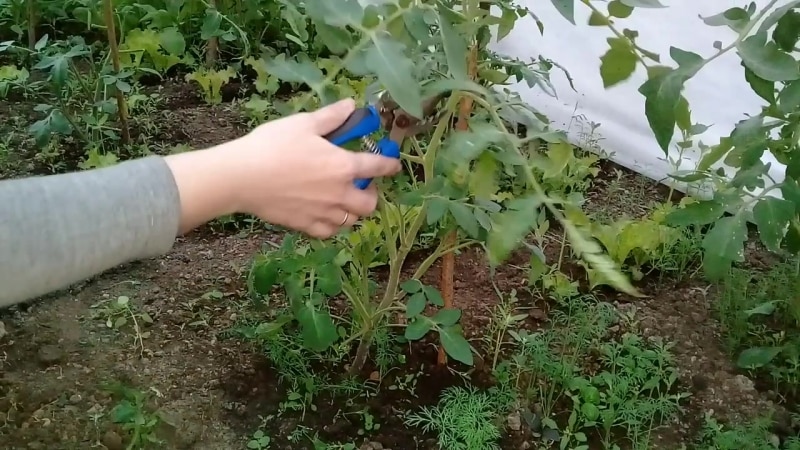 Despite their small size, Drova tomatoes can boast a large number of fruits. But there is a nuance - the bushes will not be able to support heavy tomatoes without support. Bridle comes to the rescue: it is recommended to do it during planting of seedlings. Then the plant will stretch upward along the support of wooden stakes or rods, and not hang above the ground (the plant stem may even break).
Despite their small size, Drova tomatoes can boast a large number of fruits. But there is a nuance - the bushes will not be able to support heavy tomatoes without support. Bridle comes to the rescue: it is recommended to do it during planting of seedlings. Then the plant will stretch upward along the support of wooden stakes or rods, and not hang above the ground (the plant stem may even break).
Shaping is also recommended. If the tomatoes are not shaped, then the bushes will spend their energy on the growing season, and they will not have the strength to ripen the fruits.
Protection from diseases and pests
Let's look at what diseases threaten the plant and how to prevent their occurrence.
Diseases
Despite the developed immunity, most gardeners note that the plant is prone to macrosporiosis. The development of a pathogenic disease occurs due to nitrogen deficiency in the soil. Fixed spores of macrosporiosis are spread by wind or harmful insects. High humidity promotes the spread of spores.
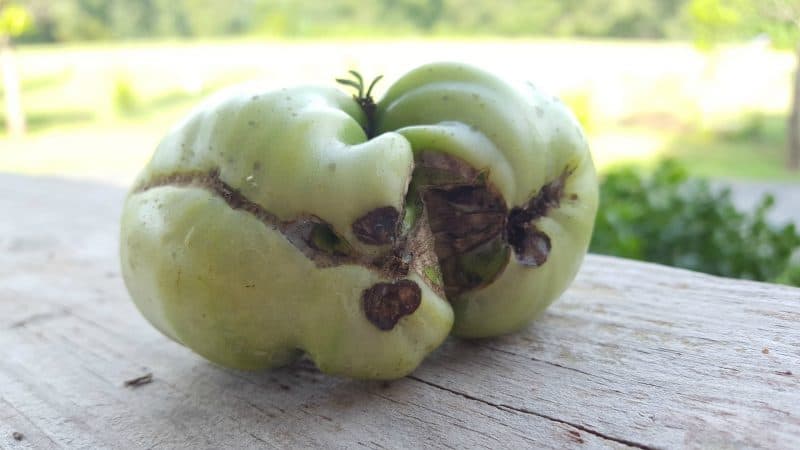 At the early stage of infection, the fungus develops in the intercellular space of plants, so it is not always possible to detect it. After a few days, you will notice how the color of the foliage has changed: it has become brown and dry due to cell necrosis.
At the early stage of infection, the fungus develops in the intercellular space of plants, so it is not always possible to detect it. After a few days, you will notice how the color of the foliage has changed: it has become brown and dry due to cell necrosis.
For prevention, use Bordeaux mixture. Also, do not allow excessive humidity in your greenhouse; it must be ventilated. Copper oxychloride will help cope with the disease itself.
Important. Always recondition your tool. He may be infected. Also, do not plant potatoes and other nightshades nearby, which can serve as a source of infection.
Anthracnose infection of fruits is asymptomatic until the vegetables ripen.Round spots form on the surface of a ripe tomato, which at first do not differ in color from the skin. Over time, the damaged areas grow and darken, becoming almost black in color. In the central part of the spot, an area of yellow-brown color with a large number of dark inclusions is formed.
The fruit tissues in these areas soften and rot, and the pulp acquires a bitter taste. Affected vegetables should not be eaten. The first therapeutic effect that diseased tomatoes should undergo is the immediate removal of the affected fruits from the plants.
Bushes that are heavily infected with anthracnose should be dug up and the soil underneath them should be disinfected. After this, you need to treat both diseased and healthy tomato bushes with antifungal agents at least 2-3 times. The drug "Tiovit Jet" is used.
If the plant is not properly ventilated, there is a possibility that it will develop late blight. This is a fungal disease that causes a huge number of problems for gardeners. It all starts with brown spots: they quickly spread from the leaves to the stems. Late blight often leads to the death of the entire crop.
Fungicides help prevent or delay the development of late blight - These are chemical or biological preparations to combat fungal diseases.
Biological - “Fitosporin” (5 g per 10 l of water), Ecosil (15 drops per 3 l of water).
Chemical - “Bordeaux liquid”, “Ridomil Gold MC”, “Tatu”, “Quadris”, others.
Pests
- Whitefly. The small white moth is dangerous for greenhouse tomatoes. Its secretions promote the development of sooty fungi on leaves and fruits.Whiteflies are also carriers of viral diseases and can cause chlorosis, leaf curl and other ailments in tomatoes. Whitefly larvae feed on the sap of plant leaves, leading to their death. How to fight: use the insecticide “Confidor” or other drugs with enteric contact action.
- Aphid. Potato and orange (peach) aphids live on tomatoes. It sucks juices from the leaves, reducing the plant’s immunity and negatively affecting yield. If spots, curling of leaves, or other signs of aphids are detected on tomatoes, the plants must be treated immediately, since the insect, among other things, carries the seedless virus and other diseases. How to fight: use “Bison”, “Fufanon”, “Karbofos”. Remove affected seedlings.
- Wireworm. A larva whose life cycle lasts two years. Another year after pupation, the click beetle appears. It is in the larval phase that the pest is dangerous to plants. It gnaws the roots of plantings and penetrates the stems, causing rot of tomatoes of various origins. How to fight: 3-4 days before planting the seedlings, the larvae are lured with vegetables placed on sticks and killed. “Bazudin” also exterminates wireworms well. Liming of acidic soils is also effective.
The nuances of growing in open ground and in a greenhouse
Greenhouses for growing tomatoes should be well lit (let in maximum light), well ventilated and protected from temperature changes.
It is advisable to build beds along the walls of the greenhouse. The height of the beds is 25-30 cm, and the width is 60-90 cm. Passages are made approximately 60-70 cm. You should not water abundantly, otherwise you will destroy the roots. The optimal watering regime is every 5-6 days. In the first 7-10 days after planting in the greenhouse, you should not give the seedlings water; they have not yet taken root.
Let's consider the nuances of growing in open ground.
There are several landing methods:
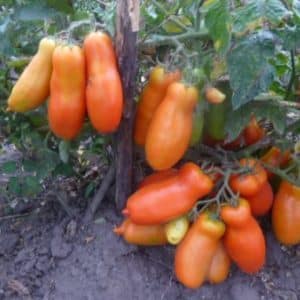
- The vertical method is classic. The seedling is removed from the container, placed in the hole and the roots are sprinkled and slightly compacted. This method is used for seedlings no more than 40 cm high.
- Horizontal method used if the seedlings are slightly elongated. then the bush is placed in the hole and the root and part of the stem are sprinkled with soil. This way the root system develops better.
It is not recommended to water the seedlings for the first 8-10 days. The only exception will be very hot weather. It is better to water in the evening with settled water. approximately 2 hours before sunset. In addition, if temperature changes are expected at night, the beds need to be covered, for example, with a material such as black agrofibre. Or film, but also black.
2 weeks after planting, we feed: dilute 2 teaspoons of superphosphate in a bucket of water and water it at the root. Bucket of water per 1 m².
Harvesting and application
Tomatoes are harvested in July-August, depending on when they were planted. The fruits do not ripen gradually, but simultaneously. Sometimes, to lighten the weight that the bushes experience, some half-ripe tomatoes are picked off and left to ripen at home.
Tomatoes are universal in consumption. Suitable for salads, first and second courses. Tomatoes are used to make tomato paste, juice, winter preparations.
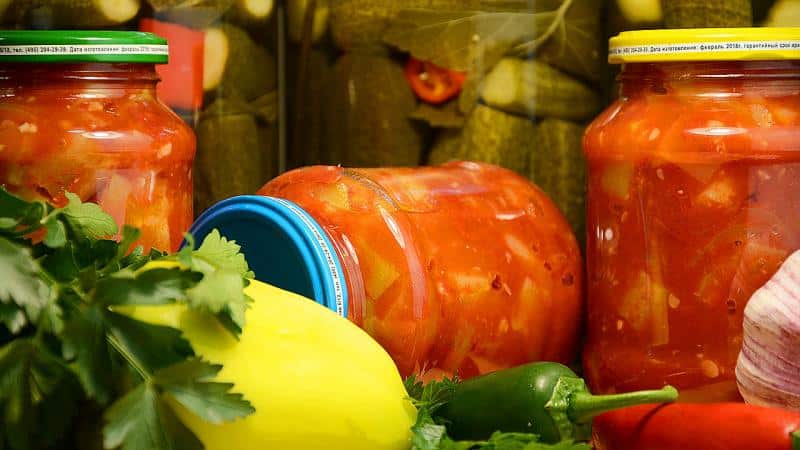
Advantages and disadvantages of the variety
Advantages:
- immunity to major tomato diseases;
- exotic look;
- compact bushes;
- simultaneous ripening;
- excellent taste.
The variety has practically no disadvantages. Relative disadvantages are the need for regular feeding and tying up.
Farmer reviews
Several reviews from gardeners who have already planted the Firewood variety in their beds.
Anna. Irkutsk: “I grew it in open ground. For me, this has become one of the high-yielding varieties of tomatoes, and this despite the fact that it does not require special care. Everything is only the most necessary, including staking the bushes for better ripening of the fruits and so that the plant does not break. This tomato is disease resistant, so only preventive measures are required.”
Svetlana. Omsk: “The Drova variety of tomato appeared in my garden 2 years ago. The summer was not too warm, so I had to wonder: will the fruits, which almost simultaneously filled all the bushes, ripen? The reviews stated that a maximum of 110 days should pass from planting to harvest. But my charges immediately turned brown only after 130 days. But in the end I'm happy with the result. Now Firewood is the tomatoes that take up a large planting area for me. After all, they can not only be salted and pickled, but also used to make delicious sauces.”
Conclusion
Thanks to its strong immune system and excellent taste, the variety is becoming increasingly popular among gardeners. Growing tomatoes does not pose any particular difficulties, except for proper and constant feeding. Reviews about the tomato are extremely positive. Compact and very exotic tomatoes will be loved by all family members.